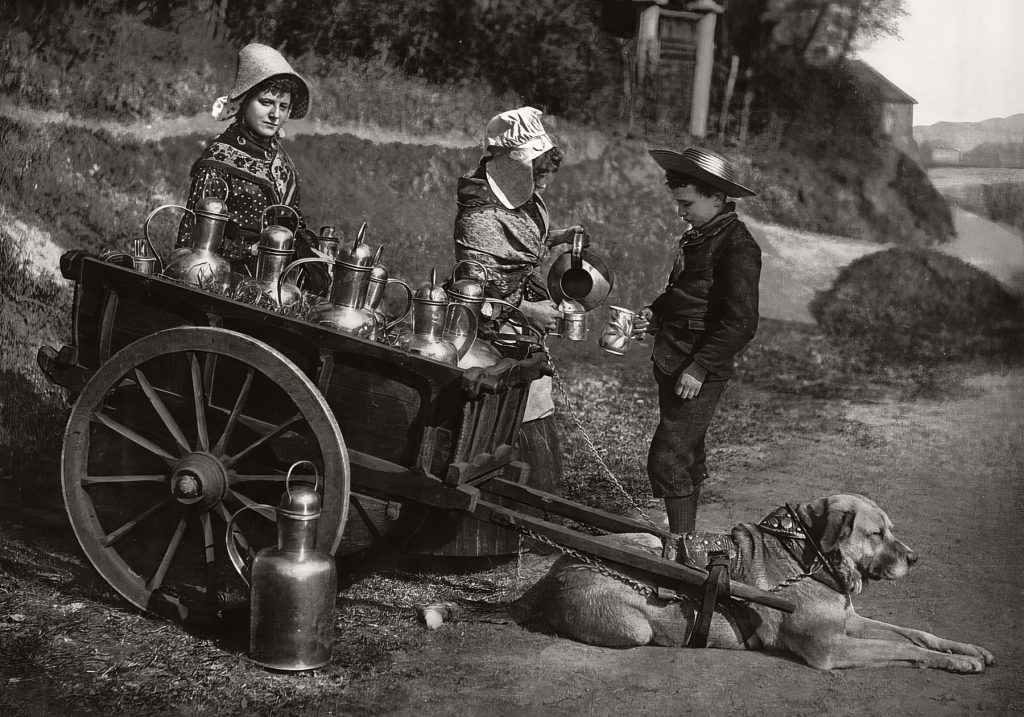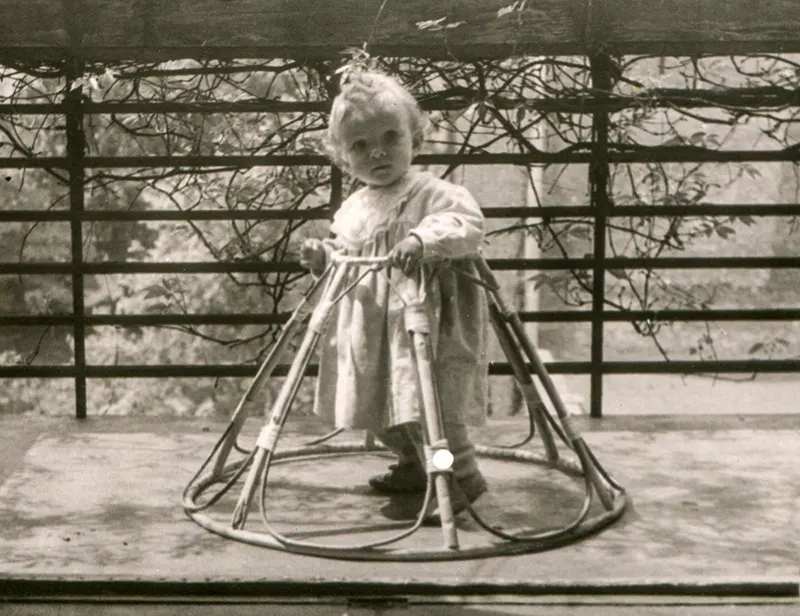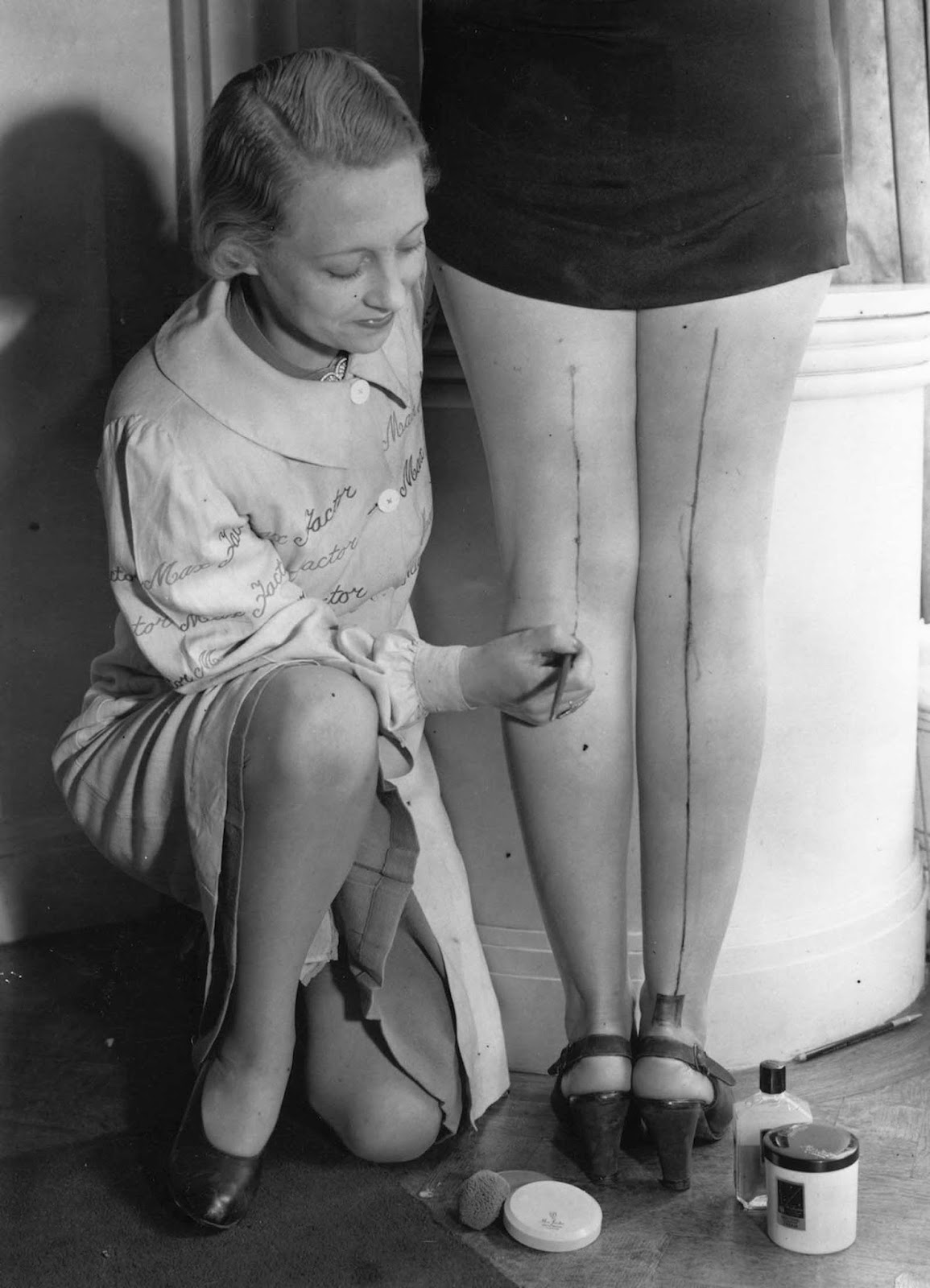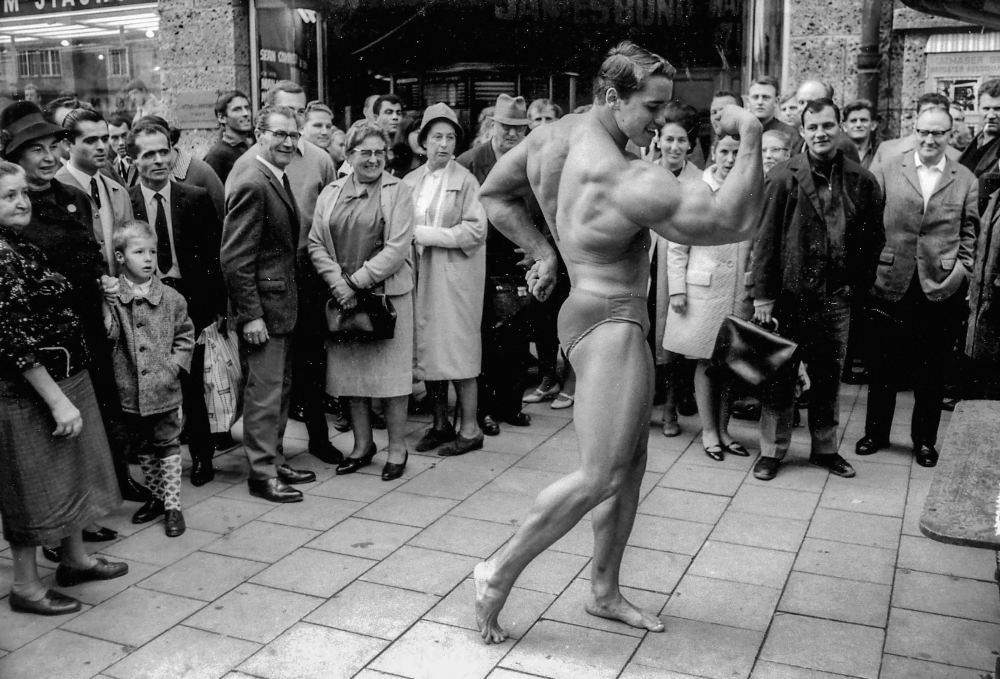These vehicles, typically pulled by a pair or more of canines, were a practical and efficient mode of delivery in their time.
In the early Victorian era, Britain also witnessed the use of dog carts, primarily associated with bakeries.
However, when dog-drawn carts were used on pedestrian areas, they were deemed a nuisance, leading to their prohibition in London in 1840.

Milk sellers in Brussels, Belgium in the 19th century.
This measure was driven partly by concerns over animal welfare, as there was a belief that these carts might be cruel to dogs, although this was not always the case.
Moreover, there were fears that overworked dogs could be more susceptible to rabies, and the prohibition was seen as a potential means of controlling the disease.
However, the medical journal The Lancet observed a decline in rabies cases in London by 1841 and noted, “Whether the police or the Dog-Cart Act have had anything to do with the decline of hydrophobia, we cannot say.”

Milk sellers in Brussels, Belgium in the 19th century.
A more general bill was introduced into Parliament in 1841, to ban the use of dog carts throughout the kingdom.
Speeches from the debate reveal that humanitarian concerns were central to the discussion, reflecting a growing awareness of animal welfare.
Despite the English ban, the tradition lived on in parts of France and Belgium, where the sight of dog-drawn carts delivering milk churns from small farms to local dairies became a nostalgic, albeit rare, occurrence.

Milk sellers in Brussels, Belgium in the 19th century.
Carts pulled by a single dog were sometimes used by peddlers. The practicality of these animals extended into military applications as well.
During World War I, dogs were harnessed to pull small field guns, playing an important role in the logistics of warfare.
This use of dogs continued into World War II, where the Soviet Army utilized them to transport wounded soldiers via carts equipped with stretchers.

Milk sellers in Brussels, Belgium in the 19th century.
In the early 20th century, a Dutch traveler named Pieter van der Meer recalled his encounters on the outskirts of Belgian towns.
You are on the outskirts of the town. The country women you meet here is on their way home to a farm several miles out. When they left home early morning those big, shiny copper cans were full of milk.
This mode of transporting milk from the dairy to the city customers is passing out of fashion; the woman’s daughters will hardly follow the picturesque custom.
For years and years, it was nearly universal, and the foreigners in Belgium were always delighted with the quaintness of theses little cars drawn by just such big dogs with shaggy, yellowish hair and wolf-like ears.

This shot is circa 1910 and was taken at the intersection of Ventura Blvd and Lankershim Boulevard in what is now Studio City in the valley but back then was called Lankershim (and before that, Laurelwood.) Notice how the milkman is pouring the milk into a pitcher, and not delivering it in bottles.

Milk sellers in Brussels, Belgium in the 19th century.











Transporting milk in a dog-drawn cart, Île d’Orléans, circa 1930.
















(Photo credit: Wikimedia Commons / Upscaled and enhanced by RHP).



